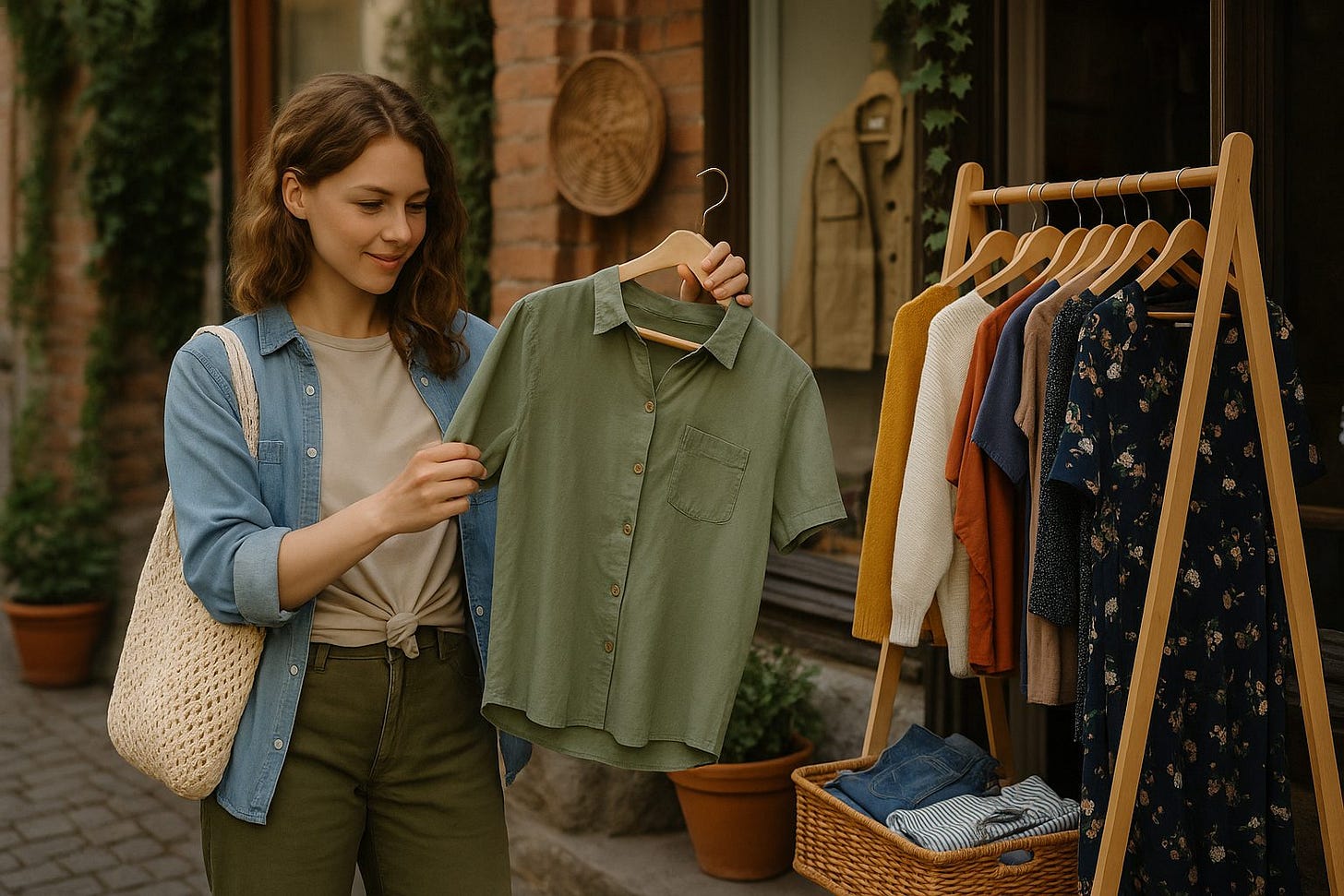7 Budget-Friendly Tips for Building a Green Wardrobe
Sustainable fashion doesn’t require a die-hard budget—or a die-hard fan. It just needs smarts, soul, and a dash of sass
You probably want to save the planet—or at least your wallet—and look sharp doing it. You're not alone. In fact, about 74% of people say they want to dress more sustainably, but many feel priced out or lost in a sea of vague "eco" claims. Let's cut through the greenwashed marketing and show you how to build a lush, planet-friendly wardrobe without blowing your budget. Ready for guilt‑free style that's smart, sturdy, and surprise‑worthy? Let's dive in.
Tip 1: Wear What You Already Own (Seriously, Dig In)
You don't need more stuff to be sustainable. Start by rediscovering what's already in your closet. It's basic, but hidden gems lie beneath those piles.
Research shows most of us wear only 20% of our wardrobe 80% of the time. Time to change that. Get creative with combinations you've never tried. That tired tee? With the right layering and accessories, it's suddenly runway-ready. Mix and match like you mean it. Might even surprise yourself.
Tip 2: Mend, Repair, Upcycle—Be Your Clothes' Best Friend
A loose button or small tear doesn't signal the end. Learn the art of the quick fix: sewing, patching, bleaching with baking soda and vinegar. Got old jeans? Turn them into a tote. Faded indigo tee? Crop it, tie‑dye it, make it your statement piece. It's creative, almost free, and the planet gives you a grateful nod.
Tip 3: Thrift, Swap, Borrow—Secondhand Is the New Black
Thrift stores, consignment shops, and online second‑hand platforms are goldmines. Not only are they easy on your wallet, they divert waste from landfills.
In the US, vintage and resale shopping is booming—15% growth in sales in 2024, with searches for "vintage" skyrocketing. Gen Z is leading the charge in thrifting—83% have shopped secondhand for style and savings. Get there, hunt like you mean it.
Also read: 6 Clever Tricks to Avoid Greenwashing When Shopping
Tip 4: Know Your Materials—Natural Is the New Luxe
Look for the right labels. Natural fibers like organic cotton, linen, hemp, wool, TENCEL™, and modal are low-impact, biodegradable, durable—and cooler to wear.
Stay away from plastics-on-a-roll: polyester, acrylic—they shed microplastics into oceans and ecosystems. Choose natural or recycled instead. Your skin (and water supply) will thank you.
Also read: 5 Quick Recycling Hacks That Save Time, Space, and Sanity
Tip 5: Seek Quality, Not Quantity
Fast fashion sells cheap thrills, not lasting love. These pieces quickly unravel—literally. Instead, hunt for well-made garb: neat seams, non-synthetic linings, lasting functionality.
It's not about splurging—it's about stretching value. A timeless blazer might cost more upfront, but trust me—it lasts. Fewer replacements, less waste, smarter spending.
Tip 6: Embrace the Slow, Sustainable Mindset
Slow fashion is a rebellion against fast fashion's flashy chaos. It's thoughtful, intentional, and built to last—both in style and ethics.
Think minimalist, versatile, and emotionally connected to your clothes. Attend swaps, check rental or resale programs, or support brands transparent about fabrics, workers, and factory practices. Be part of something bigger—one great outfit at a time.
Tip 7: Rent, Swap, Share—Fashion with Friends
For that one-off event or weekend fling with a trend, rent don't buy. Platforms exist that let you borrow designer pieces for a fraction of retail.
Alternatively, host a clothing swap with pals. It's fun, free, and endlessly reusable. Collaborative consumption keeps clothes alive, wallets happy, and wardrobes ever-evolving.
Final Thoughts (and a Cheeky Wrap-up)
Look at you—armed with seven savvy ways to sculpt your green wardrobe without your bank account staging a feminist uprising. From repairing to thrifting, renting to mastering eco-fabrics—each step is sustainable, stylish, and seriously satisfying.
Start small: maybe mend one beloved piece, hit a local thrift haven, or simply pause before adding something new to your cart. Slow changes, mighty impact.
What step are you trying first? I'd love to hear your successes—or your creative flops. (Hands up if you accidentally tie‑dyed something you shouldn't have… been there, done that. 😉)


